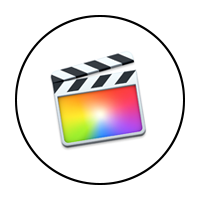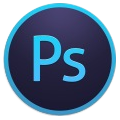Final Cut pro x is a revolutionary video editing application that helps beginners and seasoned professionals achieve stunning results.

Learning Outcomes
At the end of the course the participant will be able to
- Create Corporate films
- Video Editing for Broadcast media
- Create Lisping Audio with Video
- Add background music to the videos
- Add special effects, motion animation and transitions to the videos
Getting Started
- Preparing to Install Final Cut Pro
- Installing QuickTime Components
- Installing Final Cut Pro
- Hardware Setup and Configuration
- Connecting Video Devices to Your Computer
- Controlling Video Devices With Your Computer
- About Apple FireWire
- Apple FireWire Basic
- System Configurations
- Ultra Wide SCSI Hard Disk Drive and PCI Card Specifications Optimizing Performance
- Troubleshooting
Final Cut Pro Tutorial
- The Final Cut Pro Workspace
- Setting Up Your Environment
- Editing in Final Cut Pro
- Creating Your Own Project
- Adding the Base Track for Your Sequence
- Finishing the Rough Edit
- Advanced Editing Techniques
- Match-Frame Editing
- Applying and Editing a Dissolve Transition
- Audio Editing
- Compositing and Special Effects
- Opening and Saving a New Project
- Previewing the Introduction’s Titles
- Building the Background
- Putting Dancers on the Background
- Adding Circles Around the Dancers
- Adding Titles for the Introduction
- Copying a Title’s Attributes to Other Titles
- Adding the Titles to the Introductory Sequence
- Rendering the Sequence
- Finishing a Project
- Printing to Video
- Exporting a Sequence for Multimedia or the Web
- Moving Forward With a New Project
Understanding Final Cut Pro
- The Working Environment
- The Viewer
- The Canvas
- The Timeline
- The Browser
- The Tool Palette
- Other Windows You Will Use
- Log and Capture
- Edit to Tape
- Preferences
- Sequence Settings
- Project Properties
- Item Properties
- Trim Edit
- Using Menus, Shortcuts, and Controls
- Shortcut Menus
- Keyboard Shortcuts
- Tabbed Windows
- Customizing the Screen Layout
- Undoing Changes
- Working With Timecode
- Navigating by Entering New Timecodes
- Moving to a New Time by Adding or Subtracting Frames
- Moving to a New Time by Entering Numbers That Are Converted
- Separators for Timecode Entry and Logging
- Timecode Keyboard Shortcuts
- Editing in Final Cut Pro
- Editing With the Tool Palette Tools
- Background Information and Concepts
Preferences and Presets
- Setting General Preferences
- Setting Device Control Preferences
- Specifying Capture Preferences
- Using Sequence Presets
- Creating, Editing, and Deleting Presets
- Setting Scratch Disk Preferences
Getting Media Into Final Cut Pro
- Log and Capture Window
- Changing Device Control, Capture, or Scratch Disk Preferences
- Calibrating the Timecode Signal You Are Capturing
- Calibrating Capture Settings With Bars and Tone From Tape
- Capturing Video Without Device Control
- Choosing a Logging Bin for Offline and Captured Clips
- Capturing Video With Device Control
- Troubleshooting Your Video Deck
- Logging Offline Clips
- Batch Capturing Clips
- Changing Duplicate Clip Names and Filenames
- Importing a Batch List
- Changing a Clip’s Source Timecode
- Importing Media
- Importing Still Images and Audio Files
- Importing Layered Photoshop Files
- Importing Audio Files From Audio CDs
Creating and Organizing Projects
- Creating, Opening, Closing, and Saving Projects
- Autosaving Projects
- Customizing the Browser Display
- Selecting Items in the Browser
- Sorting Items in the Browser
- Organizing Projects With the Browser
- About the Browser Columns
- Using Bins to Organize Clips
- Modifying Clip Properties in the Browser
- Renaming Clips, Sequences, and Bins
- Searching for Items in the Browser
- Changing the Properties of a Project
Working With Clips and the Viewer
- Using Clips in Sequences
- Using the Viewer
- The Video Tab
- The Audio Tab
- The Filters Tab
- The Motion Tab
- Opening Clips in the Viewer
- Playing Clips and Locating Specific Frames
- Marking In and Out Points
- Creating Subclips
- Adding and Editing Markers
- Renaming Markers and Attaching Comments
- Moving and Extending the Duration of Markers
- Using Markers as Subclips
- Viewing Clips
- Opening Clips From the View Menu
- Changing Magnification in the Viewer or Canvas
- Viewing Title and Action Safe Boundaries
- Viewing Overlays
- Viewing With Different Backgrounds
- Working With Audio
- Understanding Audio Formats
- Compressed Audio Formats
- Turning Off Audio Scrubbing
- Using the Viewer to Display Audio Waveforms
- Changing Your Computer’s Audio Level
- Adjusting Audio Levels and Pan or Spread for a Clip
- Synchronizing Audio and Video
- Getting Information About the Properties of Clips
Creating Sequences and Editing
- About Sequences
- Working With the Timeline and Canvas
- About Three-Point Editing
- About Audio in Sequences
- Mixing Audio in Real Time
- How Tracks Are Composited to Create the Final Sequence
- About Presets and Sequence Settings
- Creating a New Sequence
- Changing the Settings for an Existing Sequence
- Creating Sequences Using Edit Decision Lists
- Viewing a Sequence
- Copying Sequences
- Setting Up an Edit
- Specifying the Target Tracks for Editing
- Positioning the Playhead at a Specific Edit Point
- Marking Edit Points
- Performing Edits in the Canvas
- The Canvas Edit Overlay
- Editing in the Timeline
- The Canvas Two-Up Display
- Marking Split Edits
- Setting the Edit Points to the Current Selection
- Locating a Match Frame
Working in the Timeline and Canvas
- The Timeline Window
- Elements in the Timeline Window
- Colors of Items in the Timeline Window
- Customizing the Timeline Track Display
- Timeline Scaling and Scrolling
- Scaling the Timeline Display
- Positioning the Playhead in a Sequence
- Working With Tracks in the Timeline
- Selecting Track Contents in the Timeline
- Working With Markers in the Timeline and Canvas
- Selecting Items in the Timeline
- Selecting Clips
- Linked Selection
- Selecting Items Between the In and Out Points
- Moving Clips Into the Timeline
- Moving Clips Within the Timeline
- Snapping in the Timeline
- Deleting Clips
- Copying and Pasting Clips and Clip Attributes
- Modifying Clips in a Sequence
- Making Individual Clips Visible or Invisible
- Using Offline Clips
- Changing the Playback Speed of a Clip
- Working With Keyframes in the Timeline
- Displaying Keyframes in the Timeline
- Modifying Keyframes in the Timeline
- Adding and Adjusting the Values of Overlay Keyframes
- Searching for Items in the Timeline
- Finding and Closing Gaps
- Making Still Frames From Clips in the Canvas
- Correcting Clips That Are Out of Sync
Rendering
- About Rendering
- Rendering Versus Real-Time Playback
- How Sequences Are Rendered
- Setting a Sequence’s Render Qualities
- Editing Render Quality Levels
- Video Rendering
- Audio Rendering
- Using Nested Sequences
- Using Nested Sequences to Render Transitions
- Rendering Indicators
- How to Avoid Rendering
- Rendering
- Specifying Storage Locations for Render Files
- Using Cache Manager to Manage Rendered Files
- Automatically Rendering Before Playing
Creating Final Output
- Printing to Video
- Editing to Tape
- Edit to Tape Operations
- The Difference Between Insert and Assemble Editing
- Choosing Which Tracks to Record
- Setting Up for Editing to Tape
- Performing an Edit to Tape
- Setting Mastering Options
- Edit to Tape Device Settings
- Preparing a Videotape With Black and Code
- Working With Edit Decision Lists
- Exporting an EDL
- Setting EDL Export Options
- Importing an Edit Decision List
- Working With Batch Lists
- Exporting a Batch List
- Exporting FXScripts as Text
- Exporting Sequences and Clips
- Exporting Sequences and Clips in a Batch Operation
- Batch Export Columns
- Naming Options Dialog Box
Managing Complex Projects
- Placing Sequences Within Other Sequences
- Nesting Clips
- Using the Sequence Trimmer
- Relinking Offline Files
- Moving a Project and Its Media
- Managing Projects With Multiple Users
Building Effects With FXBuilder
- What Is Scripting?
- How Does FXBuilder Work?
- Opening FXBuilder
- Opening and Applying Scripts
- The FXBuilder Tabs
- Running a Script in FXBuilder
- Applying a Script in the Timeline
- Rendering
- Modifying Scripts
- How Is a Script Structured?
- Exporting Scripts
- Exporting Scripts as Text Files
- Preventing Scripts From Being Modified or Viewed
- Making a Favorite Effect From a Script
- Installing Scripts
- Building Scripts
- About the FXScript Commands
- Statements
Enquire Now


ADOBE PHOTOSHOP CC
This course is designed for Photographers, Digital Designers, Digital Artists and for the Photo enthusiasts.
![]()
ADOBE INDESIGN CC
The industry-leading page design and layout toolset lets you work across desktop and mobile devices to create, preflight, and publish everything from printed books and brochures to digital magazines, eBooks, and interactive online documents.
![]()
ADOBE ANIMATE CC
This Adobe Animate training course is geared toward users who have no formal training with Animate and is ideal for digital and traditional designers looking to move further into the interactive realm, and is a great way for you to learn Animate.



